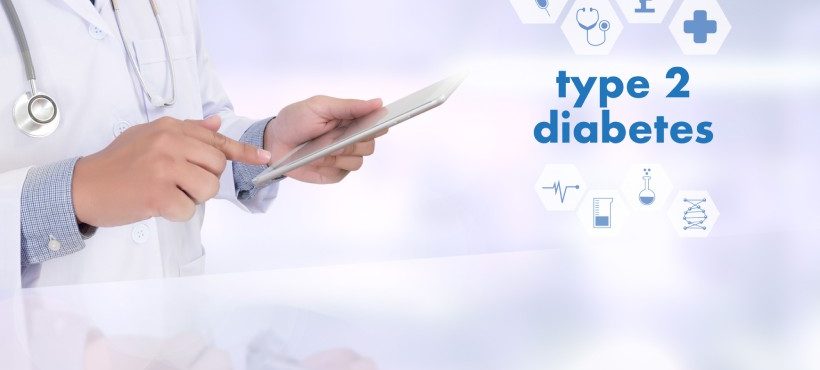
The Treatment, Signs and Symptoms of Type 2 Diabetes
Type 2 diabetes is sweeping across the United States. More than 29 million Americans have diabetes. That’s nearly one-tenth of the population.
Yet millions of people are not aware of their condition. One reason why is that the signs and symptoms of type 2 diabetes are obscure.
What causes type 2 diabetes, and what is insulin resistance? How does diabetes present inside the body? What kinds of treatment can someone with diabetes pursue?
Answer these questions and you can stop diabetes from affecting you or your loved ones. Here is your quick guide.
The Causes of Type 2 Diabetes
Insulin is a hormone that the body produces to regulate blood sugar levels. It brings the sugar into blood cells, allowing the cells to use it as a source of energy.
But insulin is not perfect. It cannot remove excess levels of sugar in the blood.
Cells can become resistant to it, causing sugar to gather in the bloodstream. This is called insulin resistance, and it is a major factor in diabetes.
Most people intake high levels of sugar through food. Sweets and processed foods can pass sugar into the bloodstream. Foods that are high in carbohydrates like bread and pasta can also put sugar into the blood.
A person’s genetics can impact their risk for diabetes. There are more than 150 DNA variations that scientists associate with diabetes risk. Some variations can cause cells to absorb less sugar.
Older adults are at higher risk for diabetes than children and adolescents. BIPOC people have higher rates of diabetes than white people.
Signs and Symptoms of Type 2 Diabetes
The symptoms of type 2 diabetes present over many years. A person may notice that they are very hungry, even after they eat a full meal.
They may drink a lot of water and yet remain thirsty. They may go to the bathroom multiple times, hours after they had their last drink. This is the body’s attempt to remove excess blood sugar through urination.
A person may become cranky or tired. They may regain energy after they eat, only to become tired once they have digested their meal.
As time goes on, symptoms become more significant. High blood sugar levels damage nerves and cells at the extremities of the body.
A person may feel tingling or numbness in their limbs as high blood sugar damages the nerves there. They may also have blurry vision. This occurs when high blood sugar damages the eyes.
Wounds may take weeks to heal, if they heal at all. This is a prominent problem in the feet. Someone may become sick more often, and their illnesses may get worse.
It may take some people years to discover that they are diabetic. They may receive a diagnosis after a heart attack or stroke, which diabetes can cause.
Type 1 vs Type 2
It is important to distinguish between type 1 and type 2 diabetes. Both relate to a person’s insulin levels. Both present with similar symptoms, and both can result in significant complications.
But type 1 diabetes occurs when a person’s body stops producing insulin. Their immune system may attack insulin-producing cells, or they may have defective genes. Someone with type 2 diabetes continues to make insulin, but their cells resist it.
The symptoms of type 1 diabetes develop within a few weeks. It may take years for someone with type 2 diabetes to notice their symptoms. Type 1 diabetes tends to arise in children more often than type 2.
Type 2 Diabetes Treatment
The best way to treat diabetes is to not acquire it in the first place. An individual should manage their weight through diet and exercise. They should examine their family history for any risk of diabetes that they may have.
Doctors diagnose diabetes by examining a person’s blood sugar levels. They do so through a series of tests. The A1c test examines a person’s levels over a few months, while the fasting glucose test determines immediate levels.
Type 2 diabetes is treatable through a number of therapies. Someone can work with a dietitian on a plan that involves consuming less sugar and processed carbohydrates. A diabetic diet includes whole grains, produce, and lean meats.
The person should also begin exercising. If possible, they should exercise for 30 minutes every day. Going for walks or jogs helps thin the levels of blood sugar in the bloodstream.
Many people assume that people with diabetes must inject themselves with insulin. This is more common amongst people with type 1 diabetes than type 2. But this may be a therapy for people with significant levels of insulin resistance.
An individual will need to test their blood sugar several times a day. They should do this before eating meals or taking medication. If their sugar is too high, they should wait for it to decline before eating.
A treatment plan may include taking medications. Common diabetes medications include Metformin. But every treatment plan is different, and some doctors recommend against taking pills.
There is no cure for diabetes. But research is ongoing, and current treatments are very effective. A person can expect to live years with their condition, provided that they follow their doctor’s advice.
Get Help for Diabetes
Type 2 diabetes is a complicated medical condition. It occurs when a person’s cells resist insulin. This occurs due to diet, genetics, and old age.
The signs and symptoms of type 2 diabetes include excessive hunger, thirst, and urination. As the disease progresses, a person may have problems with their hands, feet, and eyes.
Type 1 diabetes occurs when a person’s body stops making insulin. But both types are treatable. Someone should try to lose weight and monitor their blood sugar.
Get the help you need today. Maple Leaf Meds provides comprehensive medications at affordable prices. Place your order today.


